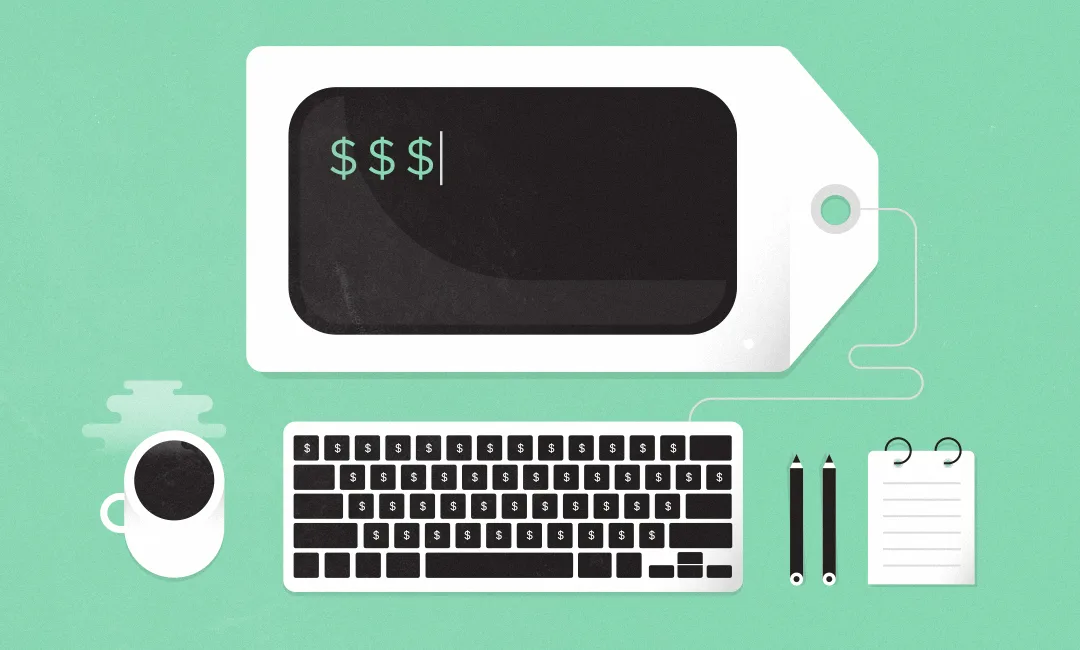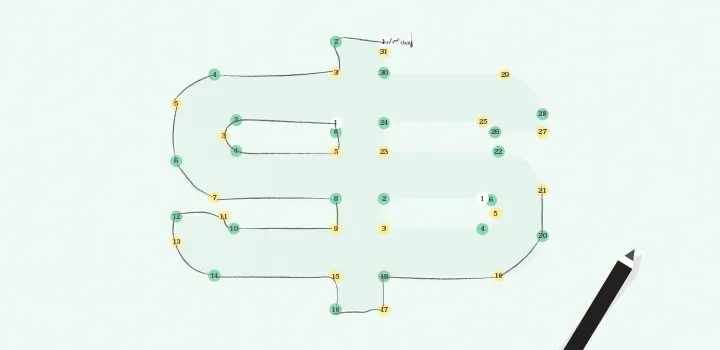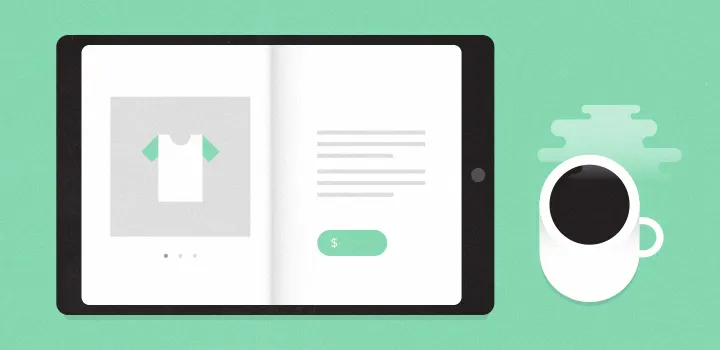Write to Sell
- 3 November 2016
- ByAndy Newman
- 2 min read

The better you get at writing and storytelling, the better you can communicate the value of your products. It's a simple way to sell more of your work, and to sell it for higher prices. Doesn't that sound great?
Great writing starts with answering questions and creating new curiosities. But before you start putting words down, take a minute to think like a buyer. What makes you grab your credit card? There's probably at least one thing about the story of your product that will engage shoppers. It could be the fact that your product will be durable and last for years. Maybe it's the way you produce your goods using locally-sourced materials. Or it could be what the product symbolizes to you on a deeper level. Whatever connects you to that item, whatever spurred you to create it, is likely to resonate with others.
Thinking like a buyer also means answering this: Who are your customers? Are you selling to busy parents who are looking for the perfect gift for their newborn? College students short on cash? Talk to them like real people, and know what benefits will be meaningful to them.
Oh, and it may seem silly, but understanding the basics of writing and grammar is important. Double and triple check your work. And then have a friend take a look. Once you read something so many times, your brain starts skipping over errors because you know what you meant to say, even if it sounds like gibberish to someone else. Trust us.

"Copy" is what marketers call words meant to sell something. So, copywriting is the art (and it is an art) of writing to sell your work.
Selling stuff is more than just describing it. You have to get people to add products to their cart, find their credit card, type in a long number, and hit purchase. What are you doing to make sure they do that? Great product photos are a start, but great writing can go even further. So go ahead and brag about your one-of-a-kind handmade process. Now's not the time to be humble.
Make it easy (and fast) to read. Use bullet points when appropriate. And short sentences are easier to scan. Don't lose a sale because you spent too many words describing something the reader doesn't care about.
Explain benefits. List features. Benefits are the aspects of your customer's life that will be improved by buying your product. Features are the details - materials, size, and other specifications - which are important, but not a selling point on their own.
Be smart with your words. Call your lower cost items inexpensive or affordable, not cheap. Describe something as high-quality or durable, not nice. Now is also your chance to speak like a human: "Excellent customer service is a generic phrase that doesn’t sound credible. We’ll answer your inquiry within 24 hours is more specific and credible," Henneke Duistermaat points out.
A great product description can be the difference between a new customer and a closed browser window. And more importantly, it gives meaning and context to your products, setting them apart from mass-produced items that you can buy at any big box store.
Put together a list of your favorite artists and brands so you can research their copywriting. How long are their descriptions? What adjectives do they use to describe their products? You'll start to see some patterns, and you can apply those techniques to your own writing.
Apple generates excitement around their products like no one else. That's no secret. But what they do isn't magic. You can do it, too. Kissmetrics deconstructs Apple's approach in this helpful article:
Fascinate your audience with stories
What stories can you tell about your product? Can you explain where the idea for your product came from? Can you tell stories about the challenges you had to overcome when developing the product? And do you have stories about your testing procedures?
Stories are fascinating. Make sure you use them to your advantage.
But to be fair, Apple has a lot of money and a team of writers agonizing over each word to describe the new iPhone, and you just don't have those kinds of resources. We get it. So how does that apply to your indie brand? Here's how we took those lessons and applied them to our own writing.
We recently created a set of enamel pins featuring our current logo and very first logo. On its own, this product might not make much sense to people outside of our company - that's where the product description comes in handy. In our description, we tell the story behind the inspiration for each logo, so it's obvious why they're near and dear to our hearts. Instead of writing something boring like "Big Cartel logo and MerchBoss logo enamel pin set" as the description, we wrote this:
Once you're here, you're part of the Big Cartel army of artists. Outfit yourself with the emblems of this proud group of independent makers.
The feathers on the back of an arrow are called the fletch, and they guide the arrow and keep it moving straight forward. They inspired Big Cartel's logo, which we simply call the Fletch.
Before Big Cartel, there was MerchBoss, our humble beginnings many moons ago. Created for bands who needed a way to sell their products, MerchBoss was like the van those bands drove from city to city: simple, dependable, and affordable.
Fletch: approx. .75 x .6
Van: approx. .75 x 1.25
Hard enamel with silver plating
Makes you want to grab one, doesn't it? Follow our lead and use your description to explain why your product matters, then invite shoppers to be part of its story. And, because that product needs to work in your customer's life too, make sure you include critical details like size, materials, upkeep instructions, or anything else that may not be obvious.
If you're still not convinced about storytelling's ability to increase the value of your work, one experiment found that telling a story alongside a product could increase its value by 2,700%. Seriously.

Got your perfect story written up? Great! Before you list that new product for sale, there are a few more things to consider.
First, think about search engine optimization. If you're new to the concept of SEO, start with our primer on SEO.
Writing with SEO in mind doesn't mean writing like a robot. It means including descriptive words and phrases that people actually search for. Selling enamel pins? Say so! Avoid overcomplicating it with terms no one actually uses. And definitely don't include phrases just because you think you'll get a higher Google ranking. It's not a good look.
After that, especially for bigger purchases, consider including videos, animated GIFs, or testimonials to help reinforce the value of your products. This is also a great chance to answer any questions a buyer might have. Link to a frequently asked questions page about your products if you find yourself answering the same questions over and over.
Finally, make sure you're being clear and honest. This includes everything from how your product will age to how long shipping takes. The sale isn't over after the buyer adds it to their cart. You want them coming back.
Think like a buyer to better understand your customers
Dust off your grammar skills
Learn the basics of copywriting
Tell stories to reinforce the value of your products
Go above and beyond to keep 'em coming back
Copywriting 101 from Copyblogger
Everybody Writes by Ann Handley
Nicely Said by Nicole Fenton and Kate Kiefer Lee
Kissmetrics shares 7 Simple Steps to Writing Product Descriptions that Sell
Dateme Tamuno on 10 fascinating copywriting techniques used by Apple
3 November 2016
Words by:Andy Newman
Tags